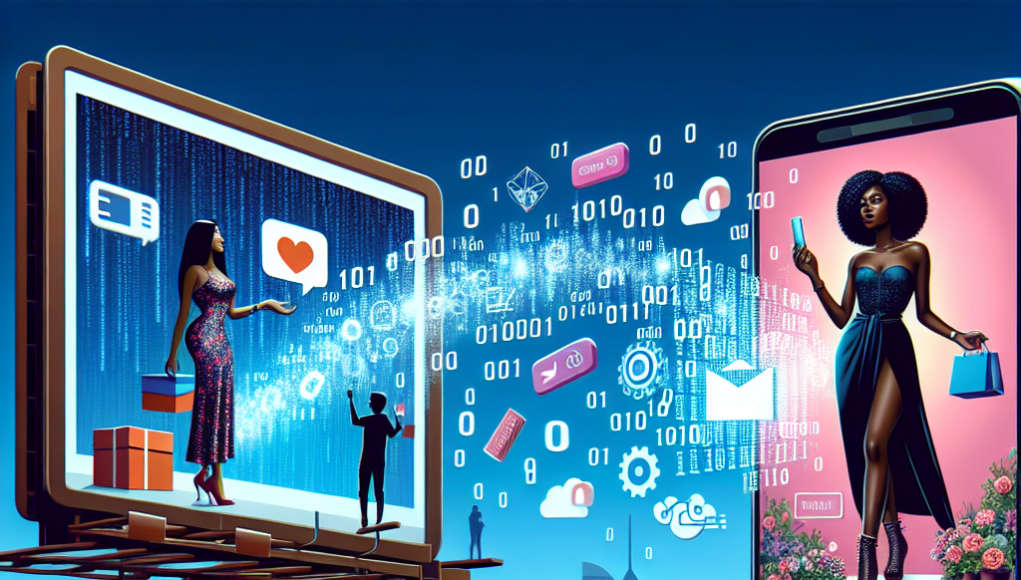In the past decade, the landscape of marketing and personal branding has undergone a seismic shift, driven by the rise of digital influencers and models. From fashion runways to social media feeds, these digital personas are reshaping the way brands connect with consumers. As technology continues to evolve, so too does the nature of influence and representation in the digital realm. This article delves into the evolution of digital influence and modeling, examines the key platforms propelling this phenomenon, and explores the challenges and opportunities that arise in this virtual space.
The Evolution of Digital Influence and Modeling
The concept of digital influence has its roots in the early days of social media, where individuals began to amass large followings by sharing their lives, expertise, and opinions online. Initially, digital influencers were often bloggers or YouTube creators who leveraged their authenticity and relatability to connect with audiences. As platforms like Instagram and TikTok gained popularity, the nature of influence began to shift, with visual content becoming a dominant force in digital communication.
Digital modeling, on the other hand, has seen a more recent emergence, fueled by advancements in technology such as 3D modeling and artificial intelligence. Virtual models, created entirely through digital means, are now gracing the covers of magazines and participating in campaigns for major fashion brands. These models, unconstrained by the limitations of the physical world, offer endless possibilities in terms of creativity and representation.
The evolution of digital influence and modeling is also closely tied to the democratization of content creation. With the advent of high-quality smartphone cameras and user-friendly editing software, virtually anyone can become an influencer or model. This shift has allowed for a more diverse range of voices and faces to be represented in media, challenging traditional norms and broadening the scope of beauty and influence.
Brands have quickly recognized the potential of digital influencers and models, leveraging their reach and relatability to engage with consumers in more authentic ways. Unlike traditional celebrities, digital influencers often cultivate a sense of community and trust with their followers, making them powerful advocates for products and services. This has led to a surge in influencer marketing, with brands investing heavily in collaborations and partnerships.
As digital influencers and models continue to rise in prominence, questions around authenticity and ethics have also come to the forefront. The curated nature of social media can sometimes blur the lines between reality and fiction, leading to concerns about the impact on consumer perceptions and mental health. As a result, there is an ongoing conversation about the need for transparency and responsibility in the digital influencer space.
Looking ahead, the evolution of digital influence and modeling shows no signs of slowing down. With technology advancing at a rapid pace, the possibilities for innovation and creativity in this space are endless. As digital influencers and models continue to break new ground, they are likely to play an increasingly important role in shaping the future of marketing and representation.
Key Platforms Driving the Digital Influencer Boom
Instagram has long been a cornerstone of the digital influencer boom, offering a visually-driven platform where influencers can showcase their lifestyles, fashion, and expertise. With features like Instagram Stories and IGTV, influencers can engage with their audiences in real-time and offer a more personal glimpse into their lives. The platform’s algorithm also plays a significant role, amplifying content that resonates with users and helping influencers grow their followings.
TikTok has emerged as a major player in the digital influencer space, particularly among younger audiences. With its short-form video format and emphasis on creativity and trends, TikTok has enabled influencers to reach viral status overnight. The platform’s algorithm is designed to surface content that is engaging and entertaining, allowing influencers to quickly build a dedicated fanbase. TikTok’s collaborative nature also encourages influencers to engage with each other’s content, further expanding their reach.
YouTube remains a powerful platform for digital influencers, particularly those who create long-form content around specific niches such as beauty, gaming, or education. With its monetization options and potential for ad revenue, YouTube offers influencers the opportunity to turn their passion into a full-time career. The platform’s emphasis on storytelling and personality allows influencers to build deep connections with their audiences, fostering a sense of loyalty and community.
Emerging platforms like Twitch, a live-streaming service primarily used for gaming, are also contributing to the digital influencer boom. Twitch allows influencers to engage with their audiences in real-time, creating an interactive and immersive experience. As the platform expands beyond gaming to include categories like music and lifestyle, it offers new opportunities for influencers to connect with diverse audiences.
Social media platforms in non-Western markets, such as Weibo in China and VKontakte in Russia, are also significant players in the digital influencer landscape. These platforms offer unique opportunities for influencers to reach audiences in different cultural contexts, often with distinct preferences and trends. Brands looking to expand globally are increasingly recognizing the importance of engaging with influencers on these platforms.
As the digital influencer boom continues, platforms are constantly evolving to meet the needs of both influencers and their audiences. New features and tools are regularly introduced to enhance content creation, engagement, and monetization. This dynamic environment ensures that digital influencers remain at the forefront of innovation, pushing the boundaries of what is possible in the virtual space.
Challenges and Opportunities in the Virtual Space
One of the primary challenges facing digital influencers and models is the sheer volume of content available online. With millions of creators vying for attention, standing out in a crowded digital space can be difficult. Influencers must continually innovate and adapt their content to capture and maintain audience interest, often requiring significant time and creative effort.
Another challenge is the issue of authenticity. As digital influencers often curate their lives to present an idealized version of reality, there is a risk of eroding trust with their audiences. Consumers are becoming increasingly savvy, seeking genuine connections and transparency from the influencers they follow. This has led to a growing demand for authenticity and ethical practices within the influencer community.
Despite these challenges, the virtual space also presents numerous opportunities for digital influencers and models. The global reach of the internet allows influencers to connect with audiences around the world, offering brands the chance to engage with diverse consumer bases. This global connectivity also enables influencers to collaborate with other creators, expanding their reach and influence.
The rise of digital influencers has also democratized access to fame and success, allowing individuals from all backgrounds to find their niche and build a following. This has resulted in a more diverse range of voices and perspectives being represented in media, challenging traditional norms and broadening the scope of influence.
Technological advancements continue to create new possibilities for digital influencers and models. Virtual and augmented reality, for example, are opening up new avenues for immersive content and experiences. These technologies allow influencers to engage with their audiences in innovative ways, offering unique and memorable interactions.
As the digital landscape evolves, the role of digital influencers and models is likely to become even more integral to marketing and consumer engagement. By embracing the opportunities and addressing the challenges of the virtual space, influencers can continue to shape the future of digital communication and representation.
The rise of digital influencers and models represents a fundamental shift in the way brands and consumers interact in the modern age. By harnessing the power of social media and technology, these digital personas are redefining the landscape of influence and representation. While challenges such as authenticity and competition exist, the opportunities for creativity, connection, and innovation are vast. As we look to the future, digital influencers and models will undoubtedly continue to play a pivotal role in shaping the worlds of fashion, marketing, and media.










